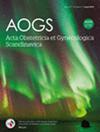Aerobic exercise to alleviate primary dysmenorrhea in adolescents and young women: A systematic review and meta-analysis of randomized controlled trials
Abstract
Introduction
Aerobic exercise has been confirmed to alleviate primary dysmenorrhea (PD) in adolescents and young women. However, the effect of the aerobic exercise type and dosage on PD alleviation was unclear. This research aims to assess the effect of aerobic exercise on PD and investigate the dose–response relationships.
Material and Methods
Systematic literature searches of Web of Science, Embass, Cochrane Library, PubMed, PsycNET, CINAHL, CNKI, Baidu Scholar, Google Scholar, and other Complimentary Medicine Database. PICOS standards were adopted in this research: participants were nonathlete women with PD; intervention was aerobic exercise of at least one menstruation cycle; comparator was any comparator; outcomes were pain intensity or pain duration; and study type was randomized controlled trials. The Cochrane Collaboration risk of bias tool was used to assess the quality of the research. Random-effect meta-analysis was conducted for pain intensity and pain duration, with prespecified subgroup analyses based on aerobic exercise components. The strength of the evidence was assessed using GRADE. This systematic review and meta-analysis was registered in PROSPERO (CRD42024533544).
Results
The study identified 16 eligible studies, with 15 involving adolescents, totaling 918 participants aged 15 to 43, with an average age of 21.26 ± 13.15. The results confirmed that aerobic exercise can alleviate PD's pain intensity (standard mean difference (SMD) = −1.728 (p = 0.00), 95% CI [−2.26 to −1.31]) and pain duration (weighted mean difference (WMD) = −12.53 h, p = 0.01, 95% CI: −21.38 to −3.68). However, the heterogeneity of these two results was high. Subgroup analysis showed that Pilates (SMD = −3.17, 95% CI [−4.26 to −2.07]), low intensity (SMD = −1.64, 95% CI [−2.10 to −1.19]), 31–45 min duration (SMD = −3.05, 95% CI [−5.36 to −0.75]), ≤2 times per week frequency (SMD = −2.24, 95% CI [−3.36 to −1.12]), and a period cycle of 2 menstrual cycles (SMD = −2.21, 95% CI [−3.13 to −1.28]) had the maximum effect size.
Conclusions
Aerobic exercise was able to alleviate pain intensity and pain duration in adolescents and young women with PD. Moderate-quality evidence indicates that Pilates, low intensity, 46–60 min, ≤two times per week, or two menstrual cycles showed more efficiency in alleviating PD. Due to the limited data, future research should prioritize conducting randomized controlled trials of aerobic exercise interventions in younger age groups to develop personalized treatment strategies for adolescents.


 求助内容:
求助内容: 应助结果提醒方式:
应助结果提醒方式:


